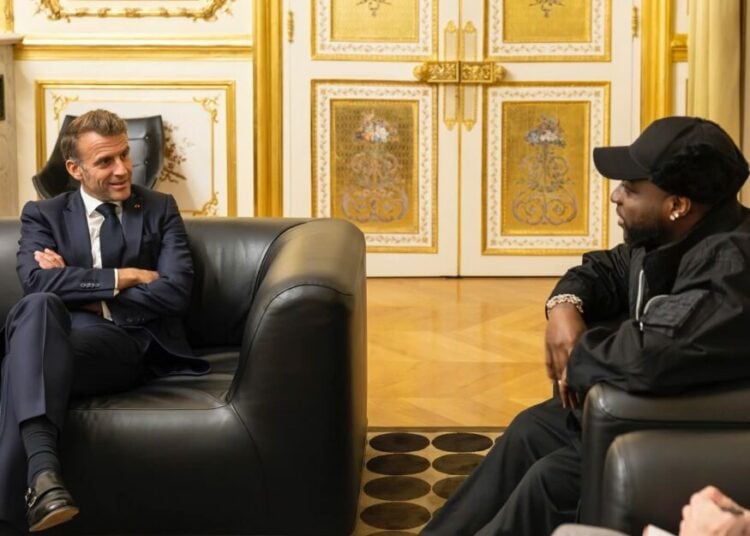Priceless Napoleonic Jewels Stolen From Louvre in Audacious Daylight Heist

In a brazen and meticulously executed operation, the Louvre Museum in Paris was subjected to a spectacular daylight heist targeting priceless French crown jewels from its famed Apollo Gallery. This audacious robbery, described as the most significant since the Mona Lisa’s disappearance in 1911, occurred on a Sunday morning between 09:30 and 09:40 local time, unfolding in just seven minutes.
Authorities, including Interior Minister Laurent Nuñez, quickly described the perpetrators as a professional and highly organized criminal gang. They demonstrated prior knowledge of the museum’s layout, having evidently “cased the joint” in advance. Their modus operandi involved parking a truck equipped with an elevating platform, resembling a freight elevator or mechanical ladder, on the street outside. The platform was raised to a first-floor window of the Apollo Gallery, a section of the museum undergoing construction work on the River Seine side. Using a disc cutter or angle grinder, the thieves pierced through the external window and gained access to Salle 705, which houses a collection of jewels primarily from Napoleon and Josephine Bonaparte.
From two display cases within the richly decorated gallery, the gang swiftly extracted eight to nine items, including diadems, necklaces, earrings, and brooches. These treasures had belonged to prominent historical figures such as Napoleon’s wife, Empress Marie-Louise, Queen Hortense of Holland, Queen Marie-Amelie, and Empress Eugénie, wife of Napoleon III. Notably, the 140-carat Regent Diamond, a central exhibit, was not stolen. However, the historic Eugénie Crown, presented to Empress Eugénie in 1855 and later donated to the Louvre, was found damaged and tossed below a window, broken into pieces, despite being valued at tens of millions of dollars. After completing their lightning-fast raid, the criminals vanished into the Paris morning on scooters, leaving behind the elevating platform and a truck containing what appeared to be their cutting tools.
Despite the sophistication of the heist, alarms sounded correctly during the incident. Five museum staff members present in or near the gallery followed protocol by contacting security forces and ensuring the protection of visitors. Culture Minister Rachida Dati confirmed that footage showed masked robbers entering “calmly” and smashing display cases, with no violence or injuries reported. The gang also attempted to set fire to their getaway vehicle outside, but this was thwarted by the timely intervention of a museum staff member. The museum was subsequently closed for investigation, leading to a mass evacuation of thousands of panicked tourists, who were eventually escorted to the city streets.
The incident has sparked a massive manhunt, with the Banditism Repression Brigade (BRB) of the Judicial Police and the Central Office for Combating Trafficking in Cultural Property leading the inquiry. Interior Minister Nuñez acknowledged the “great vulnerability” of French museums, especially in light of a recent surge in art thefts across France. These include the theft of raw gold worth €600,000 from the Natural History Museum in Paris, porcelain valued between €6 million and €9.5 million from a museum in Limoges, and multiple items stolen from both the Cognacq-Jay Museum and the Hieron Museum. According to Nuñez, such criminal groups typically target items that can be easily converted into cash, such as jewels that can be broken apart and sold on the black market, rather than world-famous paintings, which are far more difficult to display or sell.
Historically, the Louvre has recorded few thefts over its 230-year history, largely due to its stringent security measures. The most infamous case remains the 1911 disappearance of Leonardo da Vinci’s Mona Lisa, stolen by an Italian nationalist and recovered in 1914. More recently, in 1998, Camille Corot’s Le Chemin de Sèvres was removed from a wall and has never been recovered, prompting earlier overhauls of museum security. The current investigation involves studying CCTV footage and conducting forensic examinations of the scene, with the aim of quickly apprehending the perpetrators. President Emmanuel Macron is being kept informed in real time, as officials prioritize the recovery of the “priceless” jewels and address the broader implications for French museum security.
You may also like...
Zimbabwe's Ammara Brown Stages 'Spectacular' Comeback, New Album Imminent!

Ammara Brown triumphantly returned to the music scene at the Castle Lager Braai Festival after a year-long maternity bre...
The Wait Is Over: Inaugural NSW Music Prize Finalists Revealed!

The inaugural New South Wales Music Prize finalists have been announced, with artist Ninajirachi leading with two nomina...
Future Unveiled: Renfrewshire Reveals Ambitious New School Estate Master Plan

Renfrewshire Council is moving forward with a major redesign of its school estate, including a proposed joint campus for...
Horror in Ayrshire: Care Worker Accused of Abusing Vulnerable Dementia Patient

An Irvine social care worker, Margaret Cavin, has been permanently removed from the register following a series of serio...
Adventure Beckons! Proflight Zambia Launches Scenic Route to Africa's Wonders

Proflight Zambia is set to launch a new seasonal route in May 2026, connecting Lusaka and Livingstone with Maun, Botswan...
Global Acclaim: Akagera National Park Crowned Top Travel Gem for 2026

Rwanda's Akagera National Park has been named one of National Geographic's 25 must-visit destinations for 2026, lauded f...
Urgent Call: Global Stakeholders Demand Billions to Combat Cancer's Grip on Africa!

Global stakeholders gathered in Abuja for the "One Walk, One Fight" Cancer Awareness Walk, stressing the need for fundin...
Nigerian Innovator Unveils AI Breakthrough for Brain Cancer Detection!

Tobi Titus Oyekanmi, a computer scientist, has unveiled LightBT-CNN, a deep learning model achieving 98% accuracy in dia...


